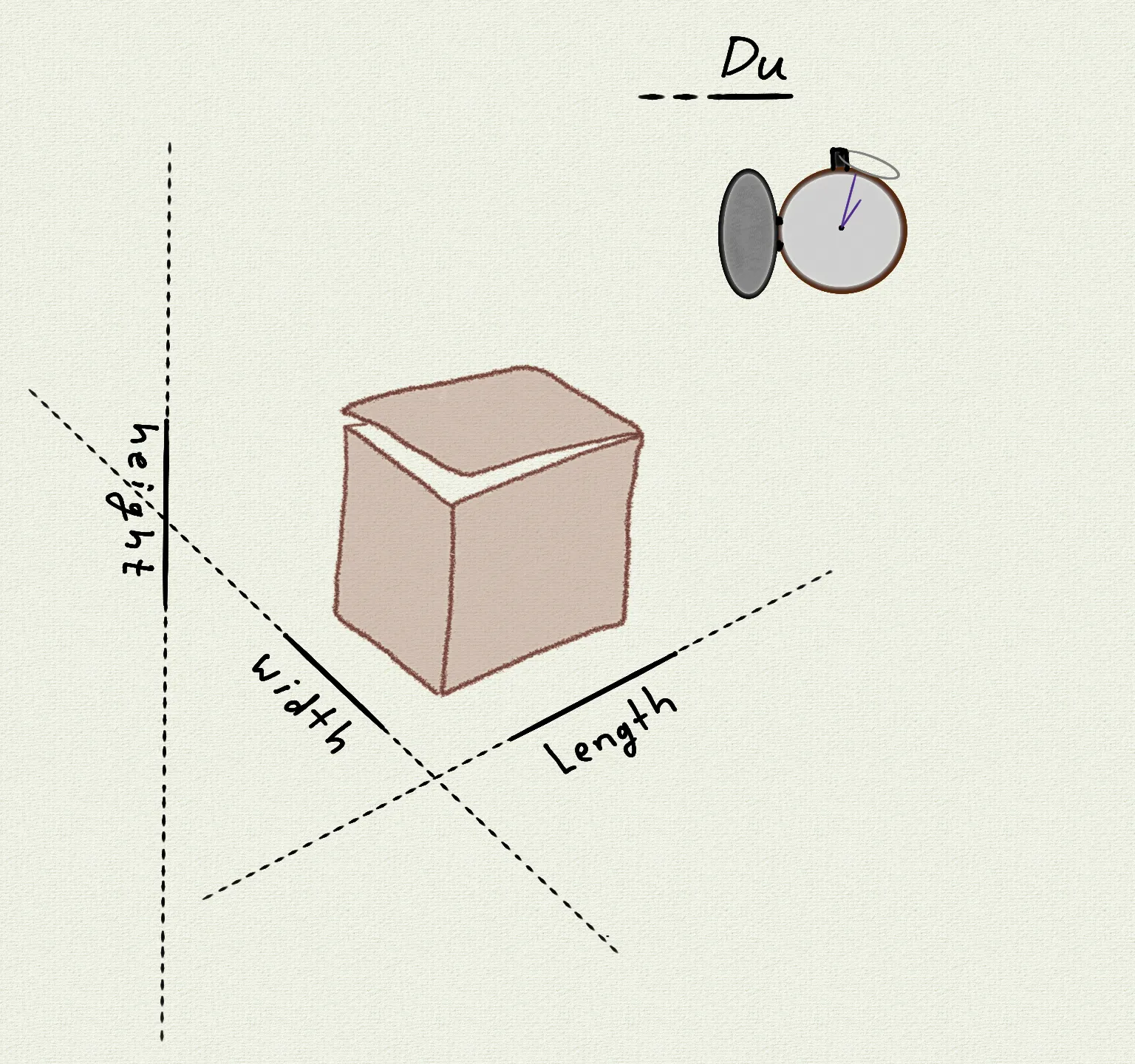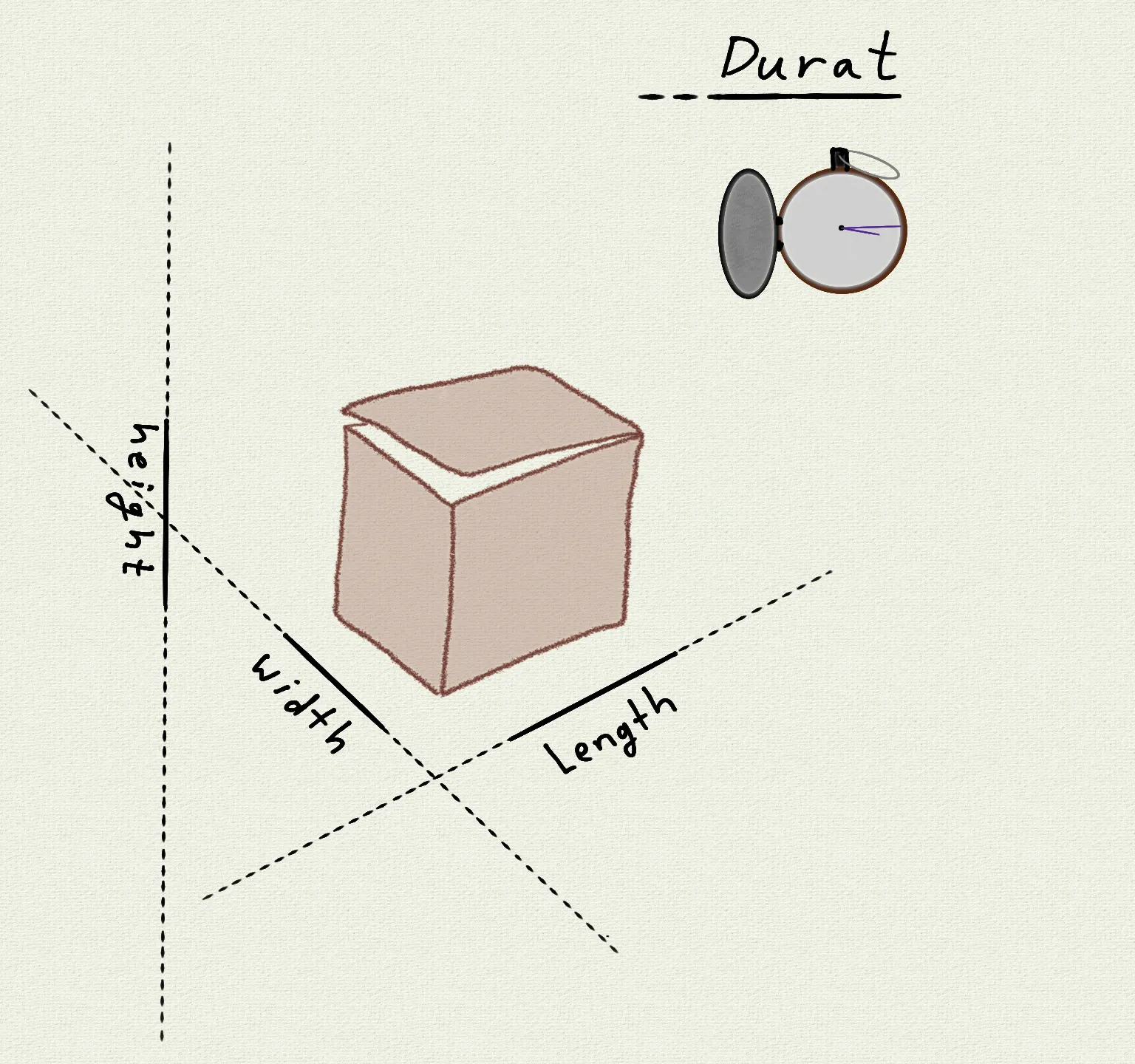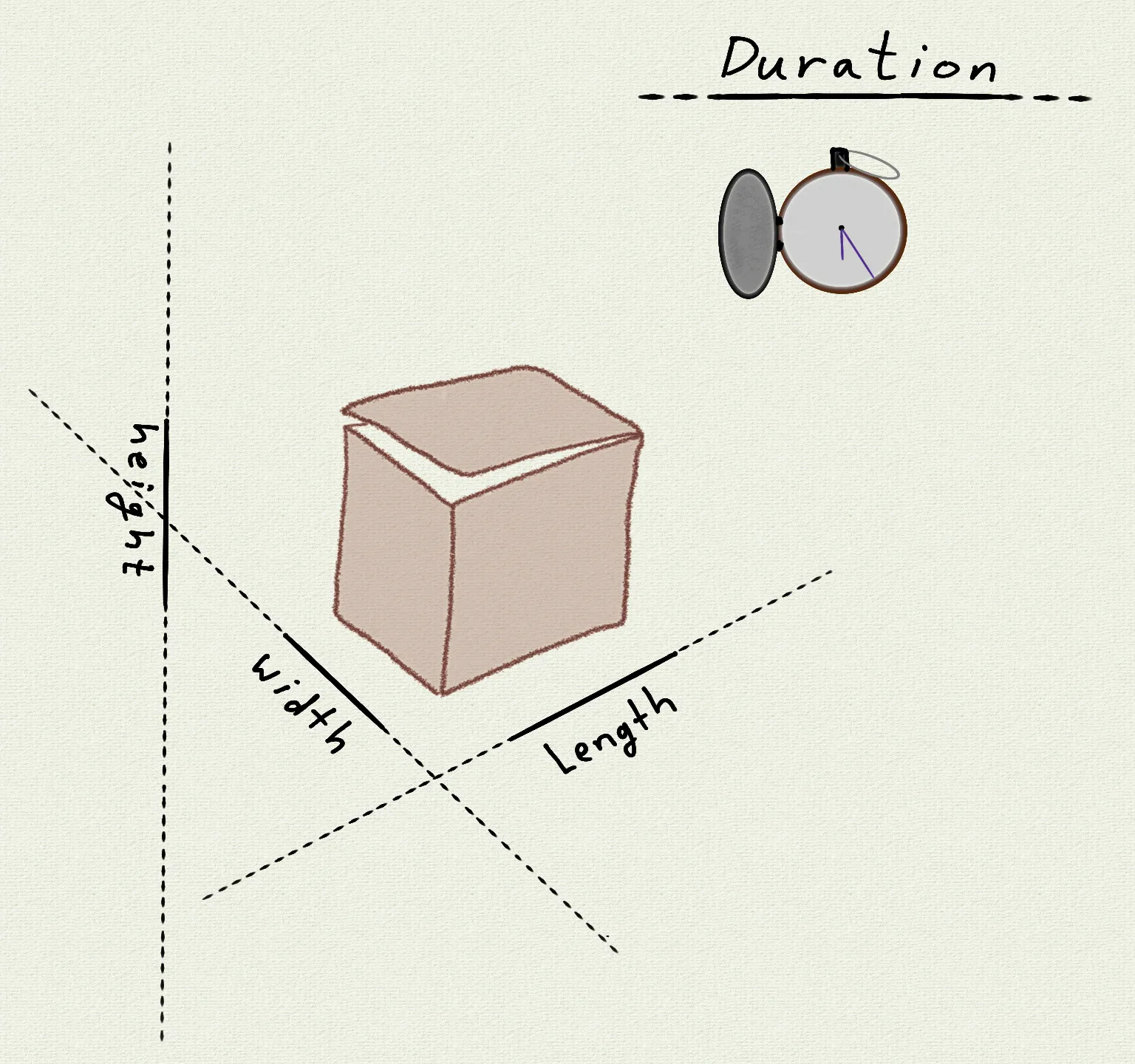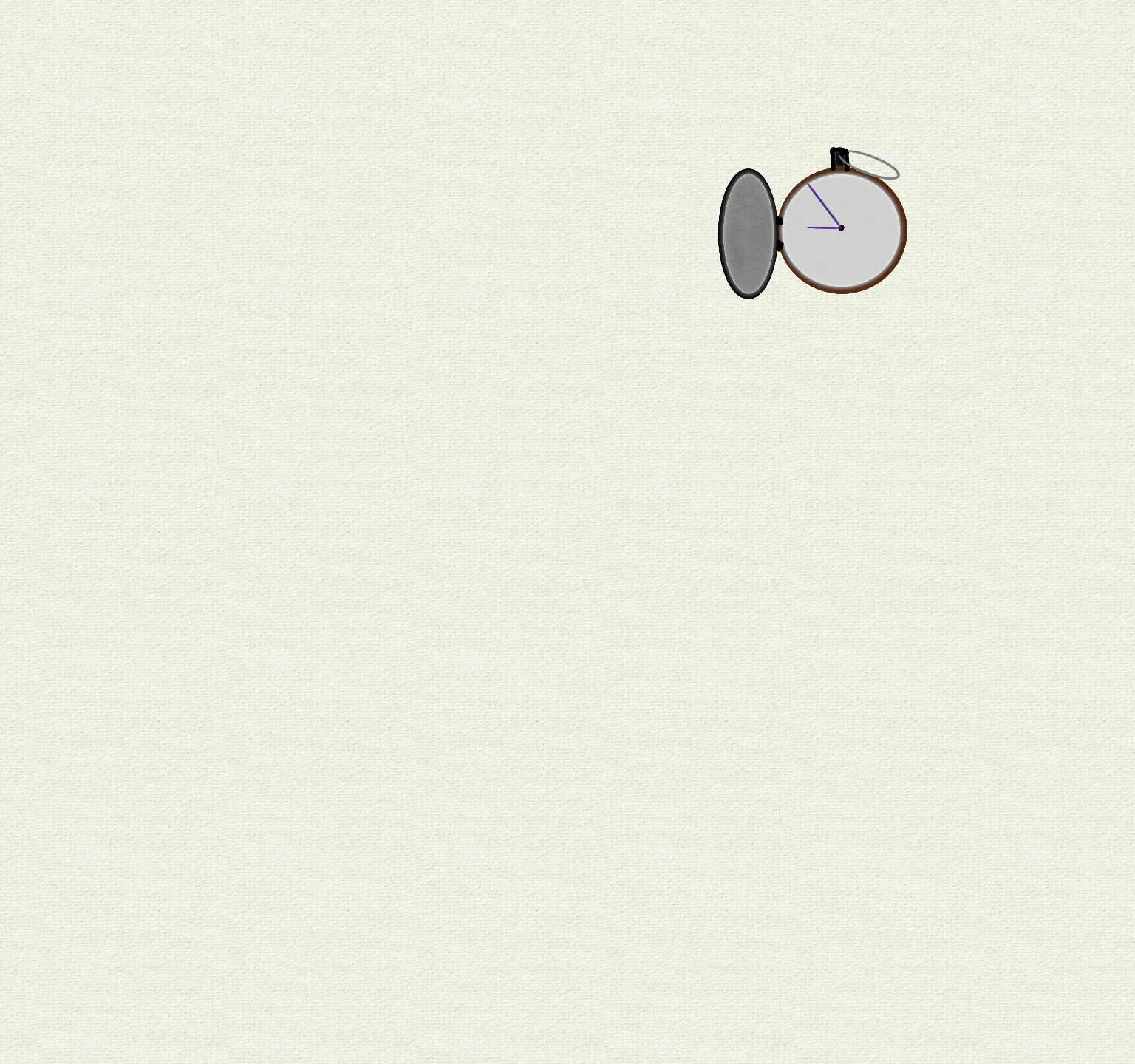A Tale of Two Times
Wed Mar 19 2025
You’ve heard that time is relative. You’ve heard it called “the fourth dimension.” Both of these sound kinda weird, abstract, incompatible with each other, and incompatible with your everyday intuition of time (you know, the thing that bus is never on). The biggest issue here is that we’re using the same word for different things. So I’m going to clear that up, and then we can talk about some time-related things that should make quite a bit more sense.
The Times, They are a Changin’
Things change. I’m not trying to be deep here, it’s just a scientific observation1.
Space exists. Things exist in space. But where things are in space is an incomplete description of the universe because things are dynamic, they move in space. It is in this sense that time is a dimension2, it is a “place” things can be and we need to mark it down if we want to completely describe the universe (I talk about dimensions more in my piece on gauge theory).
If we’re being semantically correct, this is the only type of time that gets the unadulterated label “time.” In some contexts, we make the pairing with the other dimensions more obvious by lumping it together with space and calling the whole thing spacetime.





A spacetime box with volume (length)x(width)x(height)x(duration).
If life were this simple, no one would be confused about time. Things get murky because our lives trace out paths in spacetime, and somewhere around the beginning of consciousness (and with a little help from thermodynamics…) we all decided to measure our lives by how far we moved through the dimension of time. How exactly we measure that is the totally different second thing we casually call “time.”
Our Lives and Times
There once was an ant that lived and then died.

The ant began its existence at one point in space and time and ended it at another. The path it took to get from the start to the finish is a line (however curvy), and you only need one number to tell you how far along a line you are. That number—personal for every ant—is what they perceive as the flow of time. While we also casually refer to this flow as “time” it is entirely different from the dimension, so when we’re being technical we call it the ant’s proper time.
At least in non-quantum physics, existence means tracing out a line like this. If you want to sound cool, the technical term for such lines of existence is worldlines.

Everyone has a different perception of the flow of time, and in our daily lives this is a kind of relativity of time. “A watched pot never boils;” some things feel like they take an eternity and others pass in a snap. But in this sense the relativity is an illusion. We can all calibrate our proper times to standard references (aka clocks) and then we can all talk to each other with the same language. A second is a second, a minute is a minute, an hour is an hour… we all agree.
When we take emotions out of the picture and use instruments, we can sync up all of our proper times and that is why we confuse “time” the dimension with “time” our individual proper times, the collection of synchronized proper times of all things that exist is mathematically and conceptually identical to a dimension.
…Except that sometimes it turns out we can’t synchronize everything after all.
This Time It’s Relative
It’s hard to overstate how incredible the discovery by Michelson and Morley of the invariance of the speed of light was. The takeaway is this: the speed of light is always the same number no matter who’s counting. Throw a flashlight across the room and you’ll measure the light that comes out of it at exactly the same speed as if you hadn’t thrown it at all. Wildly counter-intuitive, but it is what it is and we have to learn to live with it.
On the scale of people throwing flashlights that probably doesn’t sound very impressive, but the logical consequence really is. It means if you had a spaceship that could accelerate as fast as you can dream, it would still never catch up to light, light is always faster and faster by the same amount.
So we have a pickle, right? I see light travelling at a fixed, finite speed; I see you travelling at a slower fixed, finite speed; how do you not cover any ground on that light? Well you do cover ground in space so the difference just has to come out of the ground you cover in time. I may see less space between you and my light beam, but if it takes you longer to cross that space then the speed works out the same. Now your life has to physically pass slower than mine, our relativity is no longer an illusion. When your impartial watch ticks one second, mine has ticked a thousand.
Of course it took us darn near our whole existence as a species to learn about this and not for no reason, that conversion factor only becomes noticeable once relative speeds get up near the speed of light. In all other situations: a second is basically a second, a minute is basically a minute, an hour is basically an hour.